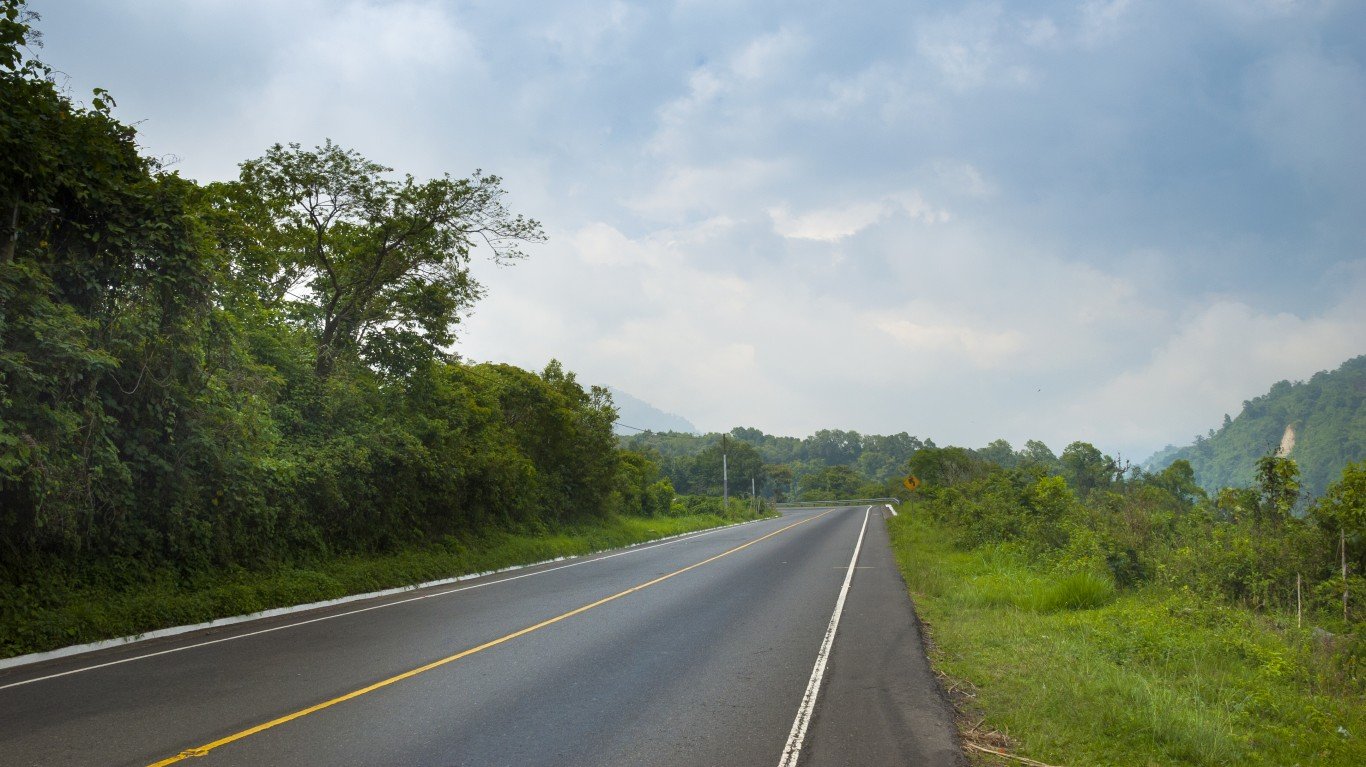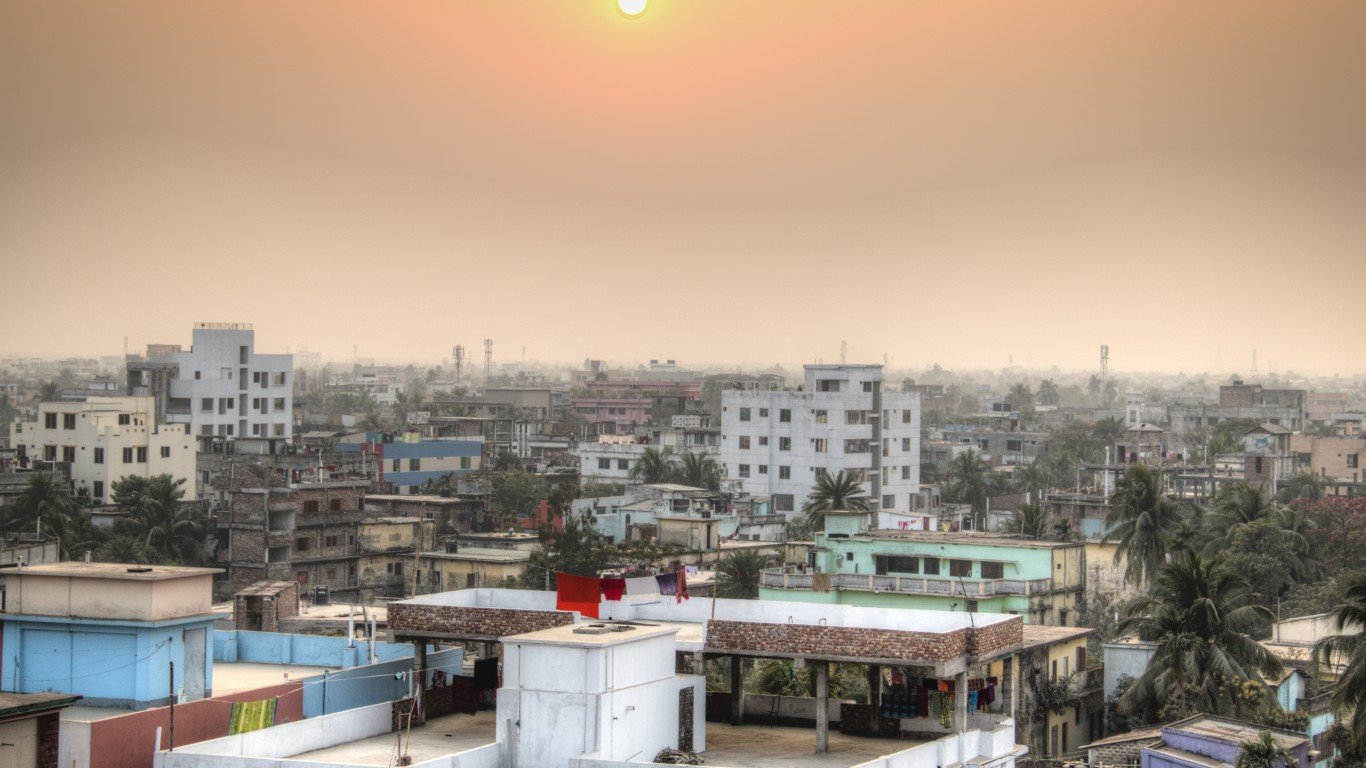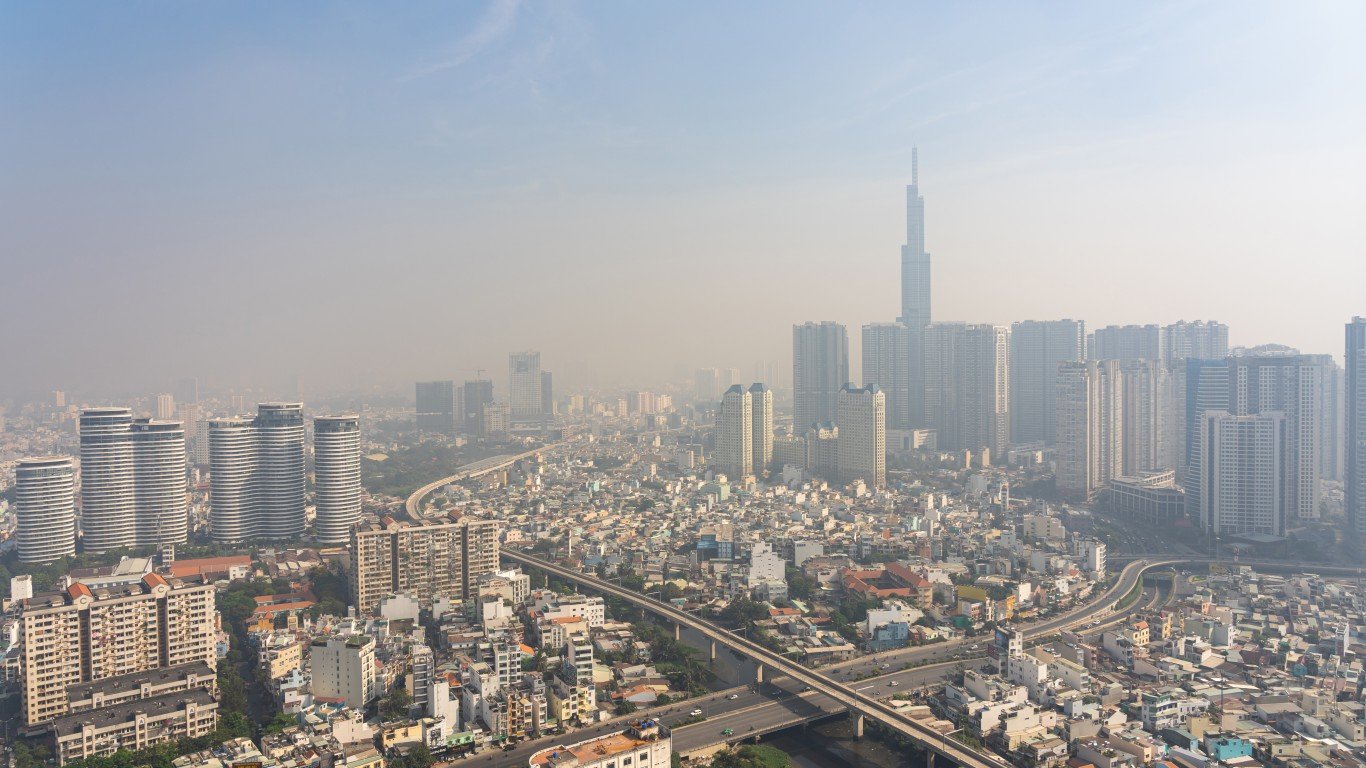
15. Côte d’Ivoire
> Total CO2 emissions change 2010-2020: 66.08%
> Total CO2 emissions change 1971-2020: 310.23% — #59 largest increase of 145 countries
> Total CO2 emissions 2020 in million tons: 10.08 — #106 largest of 145 countries
> CO2 emissions per capita change 2010-2019: 38.41% — #24 largest increase of 144 countries
> Total GHG emissions change 2010-2019: 54.13% — #14 largest increase of 88 countries
Climate change threatens the agricultural sector of Côte d’Ivoire, or Ivory Coast. The nation is a low emitter of greenhouse gases. The West African nation, a signatory to the Paris Agreement in 2015, is embarking on projects that reduce greenhouse-gas emissions in the agriculture sector.

14. Guatemala
> Total CO2 emissions change 2010-2020: 70.65%
> Total CO2 emissions change 1971-2020: 676.37% — #31 largest increase of 145 countries
> Total CO2 emissions 2020 in million tons: 18.95 — #88 largest of 145 countries
> CO2 emissions per capita change 2010-2019: 48.14% — #17 largest increase of 144 countries
> Total GHG emissions change 2010-2019: No data
This Central American nation has vowed to cut greenhouse-gas emissions by11.2% by 2030. Guatemala is the largest economy in Central America and is largely dependent on agriculture. Deforestation contributes to pollution.

13. Bangladesh
> Total CO2 emissions change 2010-2020: 71.96%
> Total CO2 emissions change 1971-2020: 2,474.76% — #7 largest increase of 145 countries
> Total CO2 emissions 2020 in million tons: 92.91 — #39 largest of 145 countries
> CO2 emissions per capita change 2010-2019: 61.83% — #13 largest increase of 144 countries
> Total GHG emissions change 2010-2019: 69.22% — #8 largest increase of 88 countries
This neighbor of India had the seventh-largest increase â more than 2,400% â of total CO2 emissions from 1971 to 2020, and the eight-biggest total greenhouse-gas emissions, or over 69%, from 2010 to 2019. According to the World Bank, Bangladesh had a faster urbanization rate than South Asia as a whole from 2000 to 2010.
12. Kyrgyzstan
> Total CO2 emissions change 2010-2020: 82.26%
> Total CO2 emissions change 1971-2020: -21.89% — #24 largest decline of 145 countries
> Total CO2 emissions 2020 in million tons: 11.52 — #98 largest of 145 countries
> CO2 emissions per capita change 2010-2019: 29.76% — #30 largest increase of 144 countries
> Total GHG emissions change 2010-2019: No data
The former member of the Soviet Union in Central Asia is becoming urbanized rapidly, at a rate of 2.05% a year. Most of its air pollution is because of increased vehicle traffic. At the Glasgow climate summit, Kyrgyzstan president Sadyr Japarov said the nation would cut greenhouse-gas emissions by 44% by 2030, but a Kyrgyzstan climate center leader said the country would need $10 billion to reach that goal.

11. Vietnam
> Total CO2 emissions change 2010-2020: 83.50%
> Total CO2 emissions change 1971-2020: 937.82% — #20 largest increase of 145 countries
> Total CO2 emissions 2020 in million tons: 254.49 — #25 largest of 145 countries
> CO2 emissions per capita change 2010-2019: 103.19% — #7 largest increase of 144 countries
> Total GHG emissions change 2010-2019: 105.09% — #3 largest increase of 88 countries
Vietnam has emerged from decades of war to become an economic powerhouse. With that has come increasing urbanization and its attendant problems such as more vehicles and pollution. This Southeast Asian country experienced the third-largest increase in total greenhouse-gas emissions from 2010 to 2019 of any country on the list, more than 105%. It also had a 103% change in CO2 emissions per capita from 2010 to 2019, seventh-highest of any nation.







